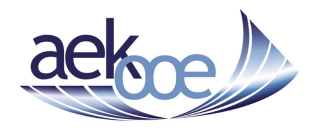Technical Summary on Test Automation

Strategic Implementation of Test Automation
Strategy Development and Goal Definition: Analysis of the current situation, goal-setting, and development of a tailored automation strategy and architecture.
Tool Evaluation: Thorough evaluation and selection of appropriate automation tools based on requirements, technologies, and usage contexts.
Pilot Project and Proof of Concept (PoC): Execution of a pilot project to validate the selected approach and tools, minimizing risks early on.
Implementation and Integration: Development, implementation, and integration of automation scripts into existing software development environments and CI/CD pipelines.
Scaling and Long-Term Operations: Expansion of automation into additional project areas and ensuring sustainability through maintenance strategies, continuous optimizations, and training of involved teams.
Technology and Tools
Open-source tools such as Robot Framework, Selenium, Cypress, JUnit, TestNG, and Playwright offer extensive, cost-free options for automating GUI and API testing.
Commercial solutions like Tricentis Tosca, Ranorex, or SmartBear TestComplete are frequently employed in environments requiring extensive support and integrations.
Containerization and cloud technologies facilitate dynamic provisioning and scaling of test environments, enhance agility, and support comprehensive integration into CI/CD pipelines.
Continuous Integration/Continuous Deployment (CI/CD), Infrastructure as Code, and DevOps practices provide technical foundations for effectively embedding automated tests into the development process.


Challenges and Critical Success Factors
Clear Objectives and Strategic Planning: Precise goals and a carefully considered implementation concept.
Holistic Tool Selection: Choosing tools optimally aligned with project requirements, technologies, and team capabilities.
Agile Integration: Seamless integration of automation within agile processes, supported by continuous feedback and adaptive methodologies.
Competency Development and Change Management: Continuous staff training and professional development, coupled with active change management to effectively manage organizational transitions.
Maintenance, Maintainability, and Scalability: Ensuring long-term maintainability of automated tests and their flexibility to adapt to new requirements and technologies.
Best Practices for Efficient and Effective Implementation of Testautomation:
Testing Pyramid
Modular and Maintainable
Quick and transparent Insights
Test-centric Development Culture
Continuous Improvement
Conclusion
Strategic and systematic implementation, combined with technological expertise, the appropriate toolset, and proven methodologies, leads to increased efficiency, improved quality management, and sustained project success.
































Get your expert consultation today




